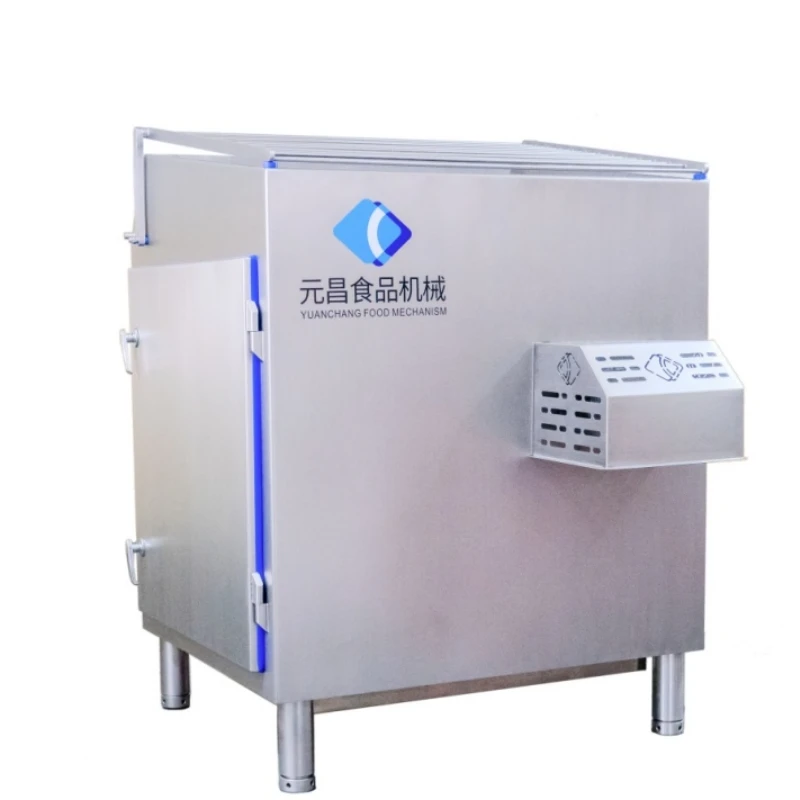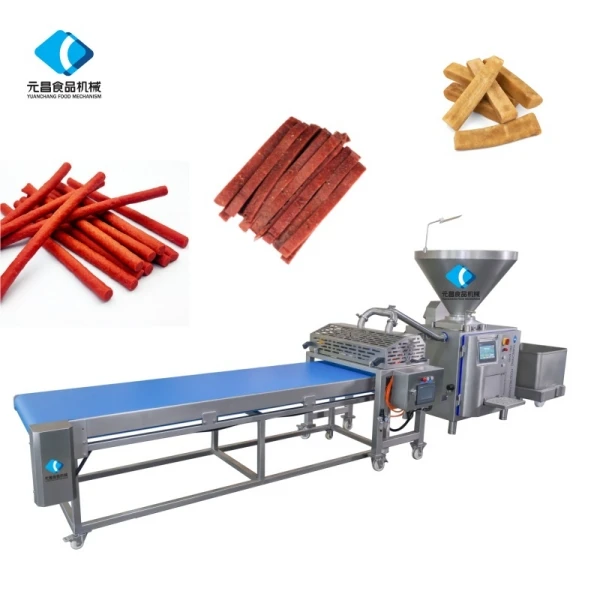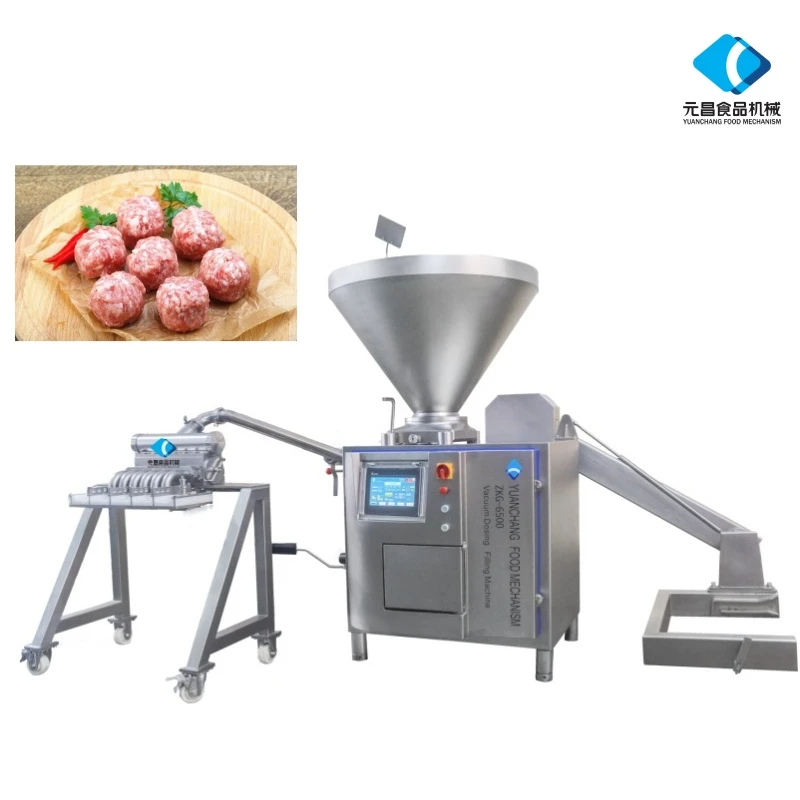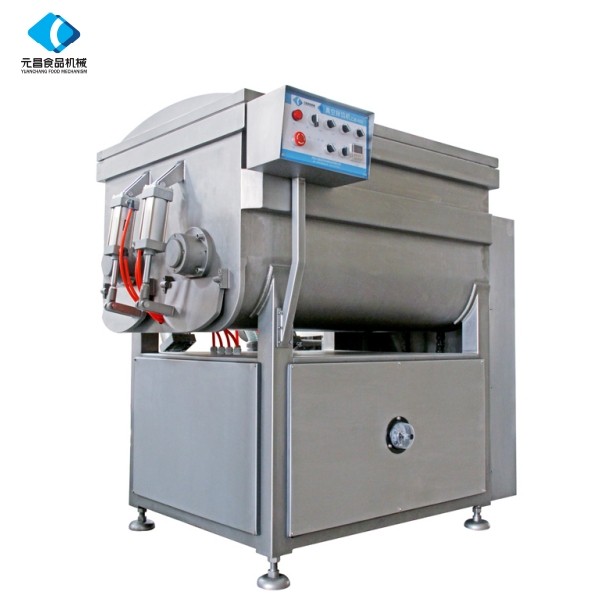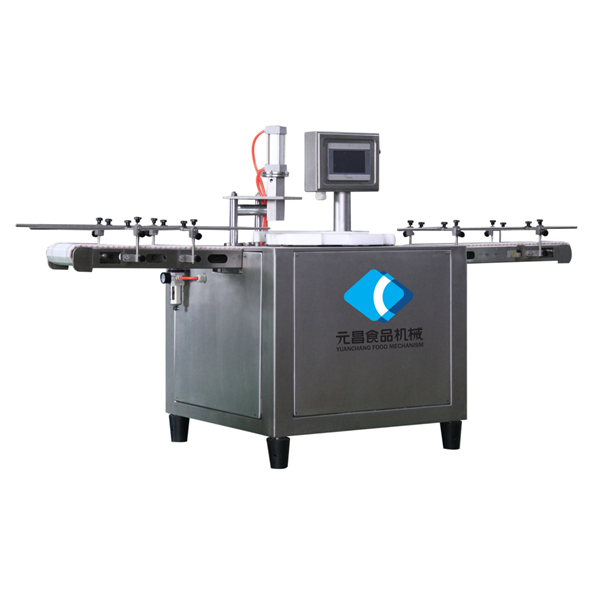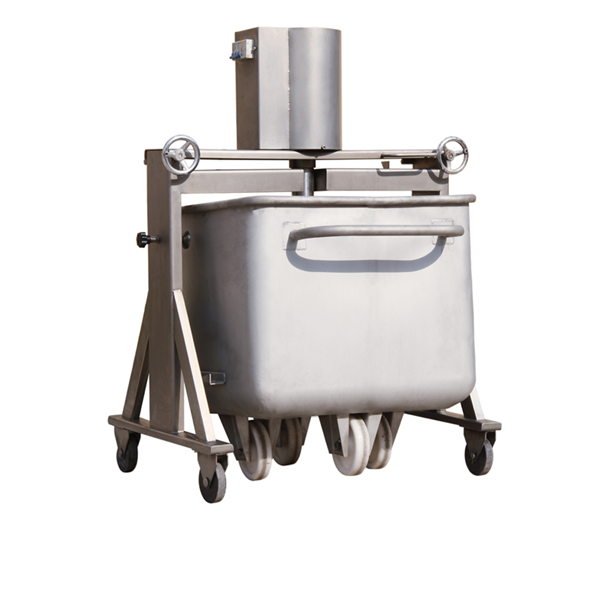Powerful Frozen Meat Grinder for Industrial & Block Processing
Introduction to Advanced Meat Grinding Technology
In the demanding landscape of modern food processing, efficiency, hygiene, and product quality are paramount. The ability to process both fresh and frozen meat blocks efficiently is a cornerstone of productivity for many operations. At the heart of this capability lies the advanced frozen meat grinder, a critical piece of equipment designed to transform raw meat into a consistent, finely ground product suitable for various applications. These machines are engineered to handle meat blocks at temperatures as low as -18°C, eliminating the need for pre-thawing, which significantly reduces processing time, preserves nutritional value, and minimizes microbial growth risks. This article delves into the technical intricacies, operational advantages, and strategic importance of these indispensable machines, catering to the needs of B2B decision-makers and engineers seeking robust, high-performance solutions.
Industry Trends in Meat Processing Automation and Hygiene
The global meat processing industry is undergoing a significant transformation, driven by consumer demand for safer, higher-quality, and more diverse products, coupled with increasing regulatory scrutiny. Key trends shaping this sector include:
- Automation and Robotics: To enhance operational efficiency, reduce labor costs, and improve consistency, processors are increasingly adopting automated systems. Advanced grinding equipment, such as the industrial frozen meat grinder, integrates seamlessly into automated production lines, optimizing throughput.
- Enhanced Food Safety and Hygiene: Stringent food safety standards (e.g., HACCP, USDA, FDA) demand equipment designed for easy cleaning, minimal cross-contamination, and bacterial growth prevention. Stainless steel construction (SUS304/316) and tool-less disassembly are becoming industry benchmarks.
- Sustainability and Energy Efficiency: Rising energy costs and environmental concerns drive the adoption of energy-efficient machinery. Modern meat grinder units feature optimized motor designs and precision engineering to minimize power consumption while maximizing output.
- Flexibility and Versatility: Processors require machinery capable of handling a wide range of raw materials, from fresh cuts to large frozen block grinder operations. This adaptability allows for diversified product offerings without requiring multiple specialized machines.
Detailed Manufacturing Process Flow of a Frozen Meat Grinder
The production of a high-performance frozen meat grinder involves a meticulously controlled process to ensure durability, precision, and hygiene. From raw material selection to final testing, each stage adheres to rigorous quality standards.
- Material Selection and Procurement: The foundation of a reliable grinder lies in its materials. For food contact surfaces, premium food-grade stainless steel (SUS304 or SUS316) is exclusively used, chosen for its superior corrosion resistance, non-reactivity with food products, and ease of sanitation. Structural components may utilize robust alloys, selected for strength and longevity. All materials conform to international standards such as ASTM A240 for stainless steel.
- Precision Casting and Forging: Critical components like the grinding head, worm (auger), and cutting sets (knives and plates) undergo specialized manufacturing processes. The grinding worm might be forged for enhanced density and mechanical strength, reducing porosity and improving wear resistance. The grinding head housing is typically cast, followed by stress relieving to ensure dimensional stability and prevent deformation under load.
- Advanced CNC Machining: Following casting or forging, components are subjected to high-precision CNC (Computer Numerical Control) machining. This ensures exact tolerances for mating surfaces, precise cutting edge geometry for knives and plates, and optimal fit for the worm within the grinding head. This accuracy is vital for efficient grinding, minimal friction, and extended service life.
- Surface Treatment and Finishing: To meet stringent hygiene requirements and enhance corrosion resistance, all food-contact surfaces undergo meticulous surface treatment. This includes multi-stage polishing to achieve a smooth, mirror-like finish that prevents bacterial adhesion and facilitates thorough cleaning. Passivation treatments are applied to further enhance the stainless steel's protective oxide layer.
- Component Assembly: Mechanical components, including the high-torque motor, robust gearbox, cutting system, and electrical control panel (often featuring PLCs for advanced models), are assembled by skilled technicians. Gaskets and seals made from food-grade materials (e.g., EPDM, silicone) are strategically placed to prevent ingress of moisture and contaminants.
- Quality Control and Performance Testing: Every grinder undergoes comprehensive testing before dispatch. This includes:
- Dimensional Accuracy: Verification against engineering drawings using precision instruments.
- Material Integrity: X-ray or ultrasonic testing for critical welds and castings.
- Electrical Safety: Compliance with IEC and local electrical safety standards.
- Operational Performance: Dry runs and wet tests with various meat types (including frozen blocks) to assess capacity, output consistency, noise levels, and temperature rise.
- Hygiene Verification: Inspections to ensure all surfaces are cleanable and meet HACCP guidelines.
- Service Life and Advantages: With proper maintenance, these grinders are designed for a service life exceeding 15-20 years in demanding industrial environments. Advantages in typical application scenarios include significant energy savings due to optimized grinding mechanisms, superior corrosion resistance from SUS304/316, and reduced downtime due to robust construction. Target industries extend beyond general meat processing to include specialized sectors such as pet food manufacturing, rendering plants, and even certain pharmaceutical applications requiring fine particle size reduction of organic materials.
Technical Specifications and Operational Expertise
The efficacy of an industrial frozen meat grinder hinges on its robust engineering and precise technical specifications. Key components include a powerful motor, an industrial-grade gearbox, and a finely tuned cutting system. The motor, often a three-phase asynchronous motor, provides the necessary torque to process dense frozen meat without stalling. The gearbox reduces motor speed while multiplying torque, ensuring smooth and consistent operation. The cutting system, comprising a helical worm (auger) and interchangeable knife and plate sets, is crucial for achieving desired particle sizes. Plates with different hole diameters allow for versatile output, from coarse grind for burger patties to fine emulsion for sausages. Understanding these parameters is essential for selecting the right model for specific production requirements.
YC Meat Machinery's JR series, including models like JR120, JR130, JR200, and JR300, exemplify advanced engineering in this domain. These models are designed to handle both fresh meat for the grinder and solidly frozen meat blocks, providing unparalleled versatility. The "JR" designation typically indicates a robust, high-capacity machine, with the numbers denoting the diameter of the grinding plate, which correlates directly to throughput capacity. For instance, a JR300 would feature a 300mm grinding plate, capable of processing significantly more material per hour than a JR120. This allows businesses to scale their operations effectively.
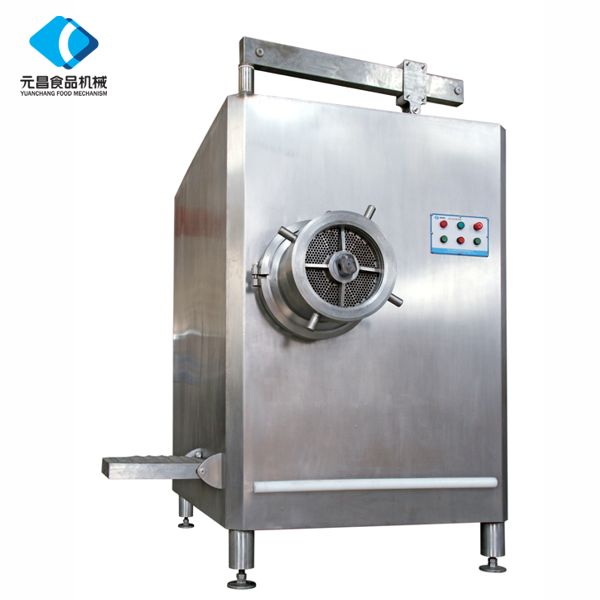
Image: Internal mechanics of an advanced frozen meat grinder.
Product Specification Table: JR Series Frozen & Fresh Meat Grinders
| Parameter | JR120 | JR130 | JR200 | JR300 |
|---|---|---|---|---|
| Grinding Plate Diameter | 120 mm | 130 mm | 200 mm | 300 mm |
| Motor Power | 5.5 kW | 7.5 kW | 15 kW - 22 kW | 30 kW - 45 kW |
| Theoretical Output (Fresh Meat) | 600-800 kg/h | 800-1200 kg/h | 2000-4000 kg/h | 5000-8000 kg/h |
| Processing Temp. Range | -18°C to +5°C | -18°C to +5°C | -18°C to +5°C | -18°C to +5°C |
| Housing Material | SUS304 Stainless Steel | SUS304 Stainless Steel | SUS304 Stainless Steel | SUS304 Stainless Steel |
| Weight (Approx.) | ~280 kg | ~350 kg | ~800-1100 kg | ~1500-2000 kg |
Application Scenarios Across Industries
The versatility of an advanced frozen meat grinder makes it an indispensable asset across a multitude of industries where raw meat processing is central. Its ability to process both fresh and frozen blocks without prior thawing provides significant operational flexibility and cost savings.
- Large-Scale Meat Processing Plants: These facilities require high-capacity machines to process tons of meat daily for various products like minced meat, burger patties, and meat fillings. The JR200 and JR300 models are ideal here, processing large frozen block grinder volumes with continuous operation.
- Sausage and Deli Meat Production: For sausage emulsions and finely ground deli meats, precision and consistency are crucial. Grinders equipped with fine grinding plates can produce the desired texture, handling both fresh trim and partially frozen components.
- Pet Food Manufacturing: The pet food industry extensively uses meat and offal, often in frozen block form. Industrial grinders enable efficient size reduction, which is a prerequisite for subsequent cooking, mixing, and extrusion processes. This ensures nutritional integrity and ingredient uniformity.
- Central Kitchens and Catering Services: For large-scale food preparation, efficiency in grinding fresh meat for the grinder for stews, sauces, or pre-packaged meals is vital. Smaller models like the JR120 or JR130 offer robust performance for consistent output.
- Rendering Plants: While primary grinding here might involve coarser outputs, the robust nature of these grinders makes them suitable for initial size reduction of various animal by-products, preparing them for further processing.
Technical Advantages and Performance Benefits
Investing in a high-quality frozen meat grinder yields significant technical and operational advantages that directly impact profitability and product quality:
- Enhanced Hygiene and Sanitation: Constructed from food-grade SUS304/316 stainless steel, these machines feature smooth surfaces, minimal crevices, and often tool-less disassembly for quick and thorough cleaning. This design significantly reduces bacterial harborage and cross-contamination risks, adhering to the strictest food safety standards.
- High Efficiency and Throughput: Powerful motors (e.g., up to 45kW for JR300) combined with optimized grinding worm geometry and precision-engineered cutting sets ensure rapid and consistent processing of even the hardest frozen meat blocks. This translates to higher output per hour and reduced processing times, boosting overall plant productivity.
- Superior Product Quality: By minimizing temperature rise during grinding, the meat's natural texture, color, and nutritional integrity are preserved. The clean, defined cut produced by sharp knives and plates results in a superior product appearance and improved binding properties for subsequent processing steps.
- Durability and Reliability: Robust construction, heavy-duty gearboxes, and wear-resistant cutting tools (often made from hardened tool steel) ensure prolonged operational life with minimal maintenance. This reduces total cost of ownership and ensures consistent performance in demanding 24/7 industrial environments.
- Versatility: The ability to process both fresh and frozen meat (down to -18°C) eliminates the need for thawing, saving time, energy, and freezer space. This flexibility is invaluable for managing varying raw material inputs and production schedules.
- Energy Efficiency: Modern grinder designs incorporate efficient motor technologies and optimized mechanical systems that reduce energy consumption per kilogram of processed meat, contributing to lower operating costs and a smaller carbon footprint.
- Operator Safety Features: Integrated safety interlocks, emergency stop buttons, and guarded feed chutes ensure safe operation, complying with international workplace safety standards.
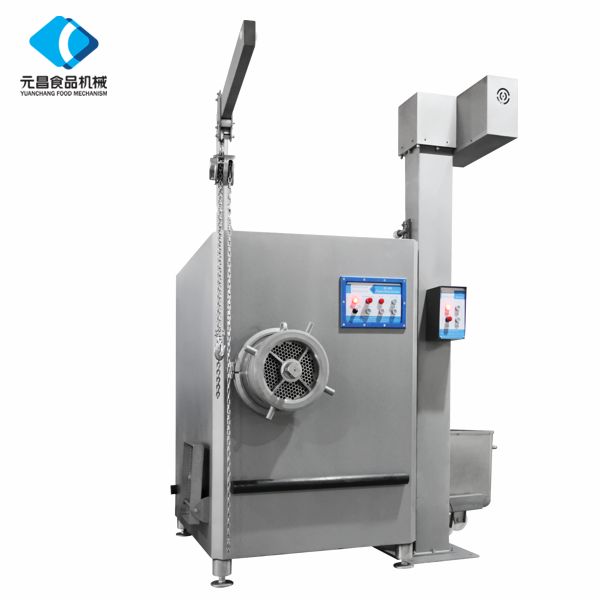
Image: A high-capacity industrial frozen meat grinder in a processing facility.
Vendor Comparison and Differentiation: Why YC Meat Machinery Excels
Choosing the right vendor for an industrial frozen meat grinder is a strategic decision that impacts long-term operational efficiency and profitability. While many manufacturers offer grinding equipment, key differentiators set leading providers apart. YC Meat Machinery has established itself as an authoritative leader through decades of specialized experience, robust engineering, and an unwavering commitment to quality and customer service.
Comparison of Industrial Frozen Meat Grinder Vendors
| Feature/Aspect | YC Meat Machinery | Competitor A (Generalist) | Competitor B (Niche) |
|---|---|---|---|
| Material Quality (Food Contact) | Premium SUS304/316, highly polished | Often SUS304, standard finish | SUS304, specific alloys for wear parts |
| Processing Temperature Range | -18°C to +5°C (true frozen block capability) | -5°C to +5°C (partially frozen/fresh) | -15°C to +5°C (limited frozen block size) |
| Certifications & Compliance | CE, ISO 9001, HACCP Design, FDA/USDA principles | Often CE, basic ISO 9001 | Specific regional certifications |
| Technological Innovation | Optimized cutting geometry, low-temp grinding, advanced PLC controls | Standard motor/gearbox, basic controls | Specialized feed mechanisms |
| Customization Options | Extensive (plate sizes, hopper design, integration) | Limited (e.g., motor voltage) | Moderate, focused on specific applications |
| After-Sales Support | Global network, spare parts, training, remote support | Regional support, basic spares | Limited, often through distributors |
YC Meat Machinery’s commitment to superior engineering, adherence to international quality and safety standards (ISO 9001, CE), and a deep understanding of meat processing challenges positions its JR series meat grinder as a preferred choice for discerning industrial clients. Our machines are designed for longevity and performance, a testament to over 20 years of experience serving leading food processors globally.
Customized Solutions for Unique Production Needs
Recognizing that no two food processing operations are identical, YC Meat Machinery excels in providing tailored solutions for the frozen meat grinder. Our engineering team works closely with clients to understand their specific production demands, raw material characteristics, desired output, and existing plant layout. This collaborative approach ensures that the delivered solution is not just a piece of equipment, but a fully integrated system designed for optimal performance.
- Varying Capacities and Output Sizes: Whether a client requires high-volume grinding of frozen beef blocks for a large distribution network or a finer grind for specialty sausage production, we offer models with diverse plate diameters and motor powers. Custom plate designs can be manufactured to achieve specific particle sizes.
- Integrated Production Lines: Our grinders can be seamlessly integrated into existing or new automated production lines, with options for customized in-feed hoppers, discharge conveyors, and control system interfacing (e.g., PLC communication with upstream and downstream equipment).
- Specialized Hopper Designs: For unique raw material input (e.g., large offal, specific block dimensions), custom hopper designs can be developed to optimize feeding efficiency and minimize manual intervention.
- Environmental Adaptations: For operations in extreme temperatures or highly corrosive environments, specific material upgrades (e.g., SUS316L for enhanced corrosion resistance) or specialized motor enclosures can be implemented.
This commitment to customization ensures maximum efficiency, reduced waste, and adherence to specific product quality parameters, providing a competitive edge for our clients.
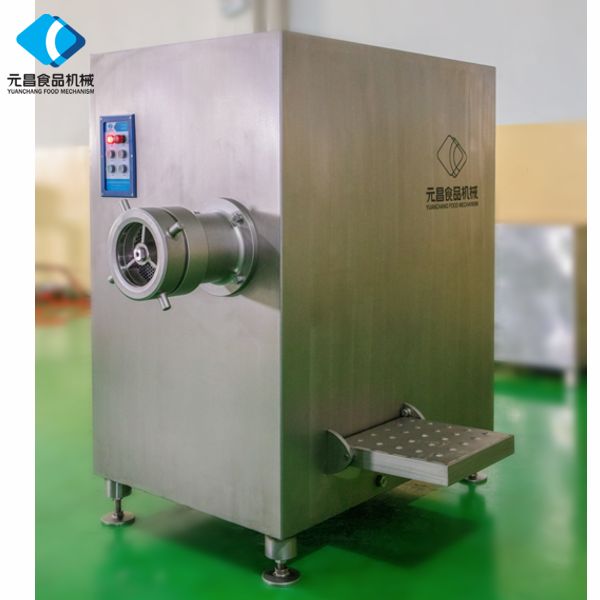
Image: Example of a customized frozen meat grinder setup.
Application Case Studies: Proven Performance
Real-world application demonstrates the tangible benefits of YC Meat Machinery's frozen meat grinder technology. Our client successes underscore our expertise, experience, and authoritativeness in the industry.
Case Study 1: Large-Scale Poultry Processor in North America
A major North American poultry processor faced challenges with their aging grinding equipment, which frequently stalled when processing large, partially frozen chicken blocks. This led to significant downtime and inconsistent product texture, impacting their production of ground chicken for retail. After consulting with YC Meat Machinery, they implemented a customized JR300 frozen meat grinder with a specialized hopper designed for their unique block sizes. The result was a dramatic improvement:
- Throughput Increase: A 40% increase in grinding capacity, moving from 5 tons/hour to 7 tons/hour, eliminating bottlenecks.
- Downtime Reduction: Stoppages due to jamming were virtually eliminated, leading to a 25% reduction in overall machine downtime.
- Product Consistency: Achieved a highly consistent particle size, resulting in improved quality scores for their ground product and reduced rework.
- Energy Savings: Despite higher throughput, the optimized motor and grinding mechanism led to a 10% reduction in energy consumption per kg of processed meat compared to their old system.
Case Study 2: European Pet Food Manufacturer
A leading European pet food manufacturer, specializing in high-meat content products, needed to efficiently process diverse frozen meat and offal blocks (including beef, lamb, and organ meats) for their extrusion lines. Their existing equipment struggled with the varying densities and temperatures of the raw materials, leading to inconsistent feed rates and premature wear of grinding components. They partnered with YC Meat Machinery to integrate two JR200 frozen meat grinder units into their pre-processing line.
- Operational Efficiency: Streamlined raw material preparation, allowing for continuous, uninterrupted feeding to the extruders.
- Component Longevity: The robust construction and high-quality cutting tools of the JR200 significantly extended the lifespan of wear parts, reducing maintenance costs by 15%.
- Batch Consistency: Achieved precise and uniform particle size for all ingredient types, ensuring consistent texture and nutrient distribution in the final pet food products.
- Compliance: The SUS304 construction and easy-clean design helped the manufacturer maintain their stringent HACCP and regional food safety certifications with greater ease.
Frequently Asked Questions (FAQ)
Addressing common queries ensures transparency and builds trust, central to Google's EEAT principles.
- Q: What types of meat can the JR series frozen meat grinder process?
A: Our JR series grinders are designed for exceptional versatility, capable of processing all types of red meat (beef, pork, lamb), poultry (chicken, turkey), and fish, whether fresh, partially frozen, or fully frozen in blocks down to -18°C. They can also handle various offal and animal by-products. - Q: What are the typical maintenance requirements for these industrial grinders?
A: Routine maintenance primarily involves daily cleaning, inspection of cutting tools (knives and plates) for sharpness and wear, and checking gearbox oil levels. Periodic checks of electrical connections, motor bearings, and seals are recommended. YC Meat Machinery provides detailed maintenance schedules and offers training for operational and maintenance staff. - Q: How do I ensure proper hygiene and cleaning for the JR series?
A: The JR series is engineered for easy sanitation. Most food-contact components, including the worm, knives, and plates, can be quickly disassembled without special tools. They are designed to be thoroughly washed and sanitized, preventing bacterial growth. We recommend using food-grade cleaning agents and following a strict wash-down procedure as per HACCP guidelines. - Q: Are spare parts readily available?
A: Yes, YC Meat Machinery maintains a comprehensive inventory of genuine spare parts, including knives, plates, worms, seals, and electrical components, to minimize any potential downtime for our clients. Parts can be shipped globally, and our service team assists with identification and ordering. - Q: What is the power consumption of these machines?
A: Power consumption varies depending on the model (e.g., JR120 vs. JR300), the type and temperature of meat being processed, and the desired output. Our grinders are designed for energy efficiency, utilizing high-efficiency motors. Specific power consumption data for your operational context can be provided during consultation.
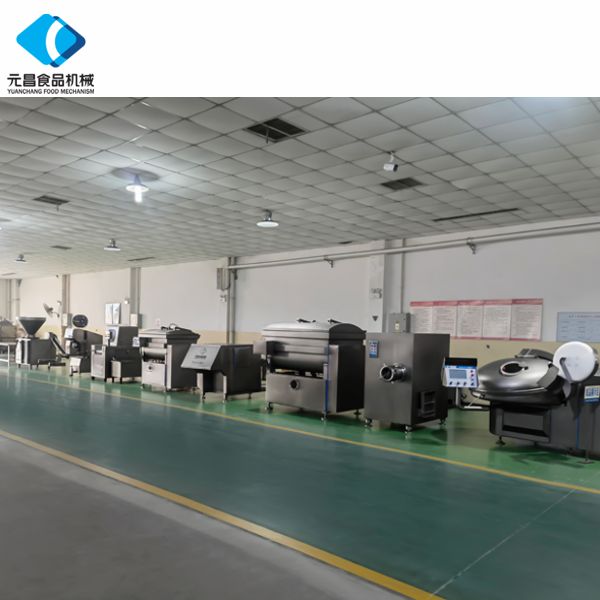
Image: Essential components and available spare parts for a frozen meat grinder.
Lead Time, Warranty, and Customer Support
At YC Meat Machinery, we understand that investment in industrial equipment requires clear commitments regarding delivery, reliability, and support. Our approach is built on trustworthiness and long-term partnership.
- Lead Time and Fulfillment: Standard JR series meat grinder models typically have a lead time of 4-8 weeks, depending on current production schedules and customization requirements. Expedited options may be available upon request. We provide transparent communication throughout the manufacturing and shipping process, ensuring timely delivery.
- Warranty Commitments: All YC Meat Machinery products, including the JR series grinders, come with a comprehensive 12-month warranty covering manufacturing defects and component failures under normal operating conditions. Extended warranty options are available for added peace of mind.
- Customer Support and After-Sales Service: Our commitment extends far beyond the sale. We offer multi-channel customer support, including phone, email, and remote diagnostics, handled by experienced technical engineers. Services include:
- Installation and Commissioning Assistance: Guidance or on-site support to ensure proper setup and initial operation.
- Operational Training: Comprehensive training programs for your staff on machine operation, maintenance, and basic troubleshooting.
- Technical Troubleshooting: Rapid response for technical issues, often resolved remotely.
- Spare Parts Supply: Guaranteed availability of genuine spare parts to minimize downtime.
- Preventive Maintenance Programs: Tailored service contracts to ensure your equipment remains in peak condition.
Conclusion
The modern food processing industry demands equipment that is not only efficient and reliable but also adheres to the highest standards of hygiene and safety. The frozen meat grinder stands as a testament to this evolution, offering unparalleled capability in transforming raw meat into high-quality products. With its robust construction, advanced engineering, and versatile processing capabilities for both frozen and fresh meat, the JR series from YC Meat Machinery provides a strategic advantage for processors looking to optimize their operations, enhance product quality, and ensure compliance with stringent industry standards. Investing in these state-of-the-art grinders is an investment in long-term efficiency, profitability, and consumer trust.
References
1. Food and Agriculture Organization of the United Nations (FAO). "The State of World Fisheries and Aquaculture." (Regular publications on global food processing trends).
2. European Hygienic Engineering & Design Group (EHEDG). "Hygienic Design of Food Processing Equipment." (Various guidelines and publications).
3. American Meat Science Association (AMSA). "Meat Science Journal." (Peer-reviewed articles on meat processing technology).
4. International Organization for Standardization (ISO). "ISO 22000 Food Safety Management Systems - Requirements for any organization in the food chain."
-
Discover the Benefits of Vacuum Marinating Machines for Efficient Food ProcessingNewsNov.24,2025
-
The Ultimate Guide to Commercial Chicken Scalders: Efficiency, Sustainability & InnovationNewsNov.23,2025
-
Chicken Harvesting Equipment: Efficient & Humane Solutions for Poultry ProducersNewsNov.22,2025
-
Comprehensive Guide to Meat Processing Plant Equipment | Efficiency, Safety & SustainabilityNewsNov.21,2025
-
Meat Processing Bins: Durable Solutions for Safe & Efficient Meat Handling WorldwideNewsNov.20,2025
-
Best Commercial Marinating Machines for Meat Processing | Efficient & ScalableNewsNov.20,2025



